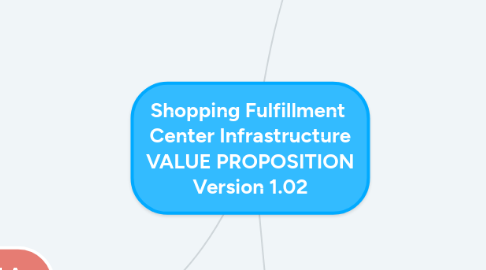
1. Retail As A Service
1.1. Experiential Retailing
1.1.1. white label shopping app and website
1.1.1.1. Real-time customization based on shopper/retailer/facility data
1.1.1.2. integration between app/web and in-store shopping
1.1.2. real-time customer service virtual and in-person
1.1.3. Store and Pop-Up Shop Design
1.1.3.1. Seasonal
1.1.3.1.1. Product and Display Intelligence
1.1.3.1.2. Knock-Down Services
1.1.3.2. Fixed
1.1.3.3. Product Display & Store Layouts
1.1.4. Universal POS System
1.1.5. Universal Shopper ID
1.2. Intelligence
1.2.1. Product/Display Attraction by market
1.2.1.1. Customer Service Feedback
1.2.1.2. Heat Map
1.2.1.2.1. % of Shopper Paused at product
1.2.1.2.2. Most effective displays
1.2.1.2.3. Referrer to the Product?
1.2.1.3. Product Sales
1.2.1.3.1. channel
1.2.1.3.2. Presentation
1.2.1.3.3. returns
1.2.1.4. Shopper feedback
1.2.1.5. Similar Product Sales
1.2.1.5.1. channel
1.2.1.5.2. Presentation
1.2.1.5.3. returns
1.2.2. Inventory/Sales Forecasting
1.2.2.1. Daily
1.2.2.1.1. Best stock balance match
1.2.2.1.2. Specific Product Anticipated returns
1.2.2.1.3. Specific Product Demand
1.2.2.2. Product Rollout
1.2.2.2.1. Product Demand
1.2.2.2.2. Similar Product Performance
1.2.3. Individual Shopper
1.2.3.1. Customer Service Profile
1.2.3.2. Returns
1.2.3.3. shopper path
1.2.3.3.1. Preferred Shopping Channel
1.2.3.3.2. Products acquired
1.2.3.3.3. Products lingered but not acquired
1.3. Marketing
1.3.1. Individual
1.3.1.1. cross-retailer marketing by product (lamp goes well with acquired couch)
1.3.1.2. in-app/web offers
1.3.1.3. shopper assistant pitch
1.3.1.4. Social media and email targeting
1.3.2. Market
1.3.2.1. retailer targeting based on sales
1.3.2.2. web and app modifications driven by real-time sales data
2. Shopping Fulfillment Centers
2.1. Agile Retail
2.1.1. Experiential Shops
2.1.1.1. Bag/Cart-free Shopping Reduces Trip to vehicle (increasing shoppers visit and sales)
2.1.1.2. Cross Retailer Shopping (one retailers pants, another's shirt)
2.1.1.3. Multiple Delivery/ Fulfillment Options
2.1.1.3.1. On-Site
2.1.1.3.2. Remote
2.1.1.4. On-Demand Manufacturing to Customize Products
2.1.1.5. Seamless Integration of e-commerce & Brick and Mortar (true omnichannel)
2.1.1.6. Shopper "calls" Product to Shop for Sizing and Touch/Feel of Variations
2.1.1.7. Shops Tied into the FC Robotics On-Demand Fulfillment System
2.1.1.8. Showroom/Sales Driven Displays w/Limited to No Stock in Shop
2.1.1.9. The New Regional Mall Modeled on the Most Successful Centers
2.1.2. Retailer Benefits
2.1.2.1. Blank Canvas for Each Retailers Unique Brand Experience
2.1.2.2. Fixed Size Shop or Flexible by Season
2.1.2.3. Flexible Lease Terms (size and location)
2.1.2.4. Small Store Footprint (with stock in FC) - Rent Savings
2.1.2.5. Touch/Feel for e-tail
2.1.3. Tech Infrastructure
2.1.3.1. Assists Retailer with Suggestions to Shopper
2.1.3.2. Automated Checkout
2.1.3.3. Guides shopper via Handheld Device (AI Suggestions)
2.1.3.4. Tenant Shops via app/web, and Continues In-Store (or vice versa).
2.2. Fulfillment Center ("FC")
2.2.1. Combines Brick & Click Supply Chain
2.2.1.1. Overstock and Shrinkage Reduced
2.2.1.2. Inbound as Case Pallets Distributed as "Eaches" (individual units)
2.2.2. e-commerce Last Mile Fulfillment Center "in" Every Shop (at a fraction of usual last-mile cost)
2.2.3. Network of Co-Located Fulfillment Centers Reduces Logistics Costs
2.2.4. Ship From Store Without the Usual Logistics Drawbacks
2.2.5. Competitive Shopper Fulfillment Speeds at Lower Costs
3. Logistics Infrastructure
3.1. In-Network
3.1.1. Stock Balancing Routes Between SFC's
3.1.2. Reverse Logistics and Returns
3.1.3. Inventory Management Systems
3.1.4. On-Demand in-store Fulfillment
3.2. Outbound
3.2.1. Truck Routing and Delivery Systems
3.2.2. Shopper Fulfillment
3.2.2.1. on-site (above)
3.2.2.2. remote (above)
3.3. Inbound
3.3.1. Regional Warehousing Rapid Distribution
3.3.2. Decentralized Product Inventory for Speedy Fulfillment
3.4. Technology
3.4.1. Robotics
3.4.2. Logistics Management
